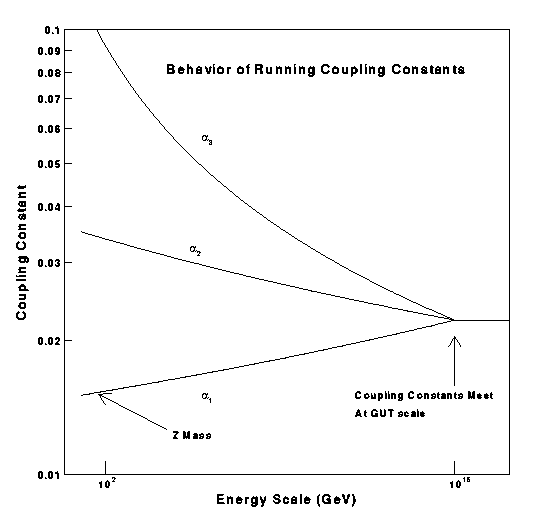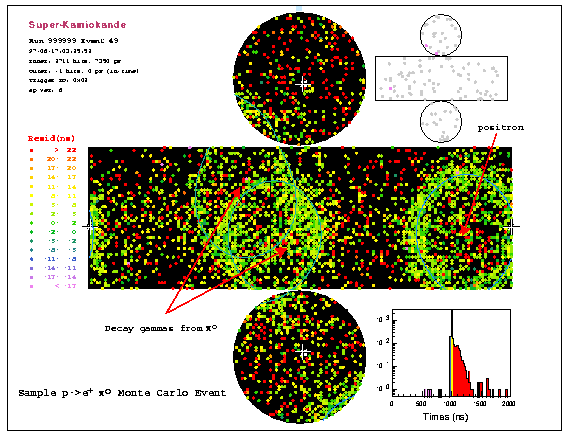

If grand unification occurs, quarks could transform into leptons by exchanging an extremely heavy particle (weighing 15 orders of magnitude more than the proton itself). Because protons are composed of three quarks this transformation would allow them to decay, something that is not predicted by the Standard Model. Observation of proton decay would be indirect evidence for these heavy particles and new physics beyond the Standard Model. Because the exchanged particle is so heavy, the proton lifetime predicted by grand unification models is extremely long... about 20 orders of magnitude longer than the age of the universe!
The most basic GUT predicts the dominant proton decay mode to be p->e^+ pi0. The Super-Kamiokande detector has excellent capibility to observe this decay mode. By using water as the source of protons, a proton from either hydrogen or oxygen would decay into a positron and a pi0. The positron produces an electromagnetic shower which is balanced by two electromagnetic showers from the instantaneous decay of the pi0 (pi0 -> gamma gamma). These electromagnetic showers can be seen in Super-Kamiokande. A Monte Carlo event is shown below (this is not real data but a detector simulation.)

No events have been observed and a limit on the lifetime has been set to be over 10^(33) years. From this, the most basic GUT has been ruled out. Other GUTs predict longer lifetimes which are within the sensitivity of Super-Kamiokande. The search for proton decay will continue at Super-Kamiokande to either confirm one of these theories or to set stringent limits on them... the most stringent in the world.